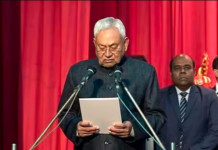The Airport Authority of India (AAI) is planning bring into operation about 50 airports over next years, which is the part of efforts of Narendra Modi’s government to boost air connectivity. The government believes that a total of 200 airports are required in a long term, which is in addition with the planned 50 airports.
The government has created an inter-ministerial task force, in order to indentify and list the airports that are needed to be operational in tier-2 and tier-3 cities across the nation. AAI chairmen RK Shrivastava in his conversation with Economic Times said “In order to meet the objective of inclusive growth, the government plans to enhance regional and remote connectivity in a time-bound manner.”
“For the expansion of air connectivity throughout the country, more than 200 operational airports are required,” added Srivastava. It was only in 2014, that AAI has been authorized to develop five (no-frills) airports at Kishangarh, Belgaum, Hubli, Jharusuguda and Tezu, work of which is already in progress, quoted Srivastava.
The country has about 450 airports and airstrips spread in various parts of India, among these number of airports and airstrips only 125 airports are in a regular operation, while the remaining ones are not being used for a several reasons.
The proposal of operational airports in small cities is in close connection with the government’s efforts for attaining regional connectivity. The regional flights will be at a fare of Rs.2500 per seat. In contradiction with these positive efforts, a fact remains that AAI has invested Rs.300 crore on modernization of airports, but frequency of landing flights is completely missing or it is limited to just 2 – 3 flights per day, eventually, turning these airports into ghost airports.
Srivastava speaking for such airports said “AAI is adopting measures to market these airports to make them economically viable through various marketing initiatives.” He further remarked that “The airports are often developed ahead of demand for boosting trade, tourism and socio-economic development of the region in line with the government’s responsibility for equitable growth and development for all. Thus, some of the airport projects which may not be viable at present can become viable in future and prove to be a real asset for the city and the state.”













